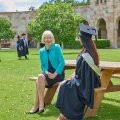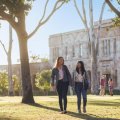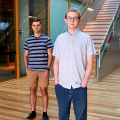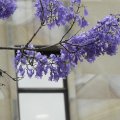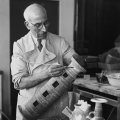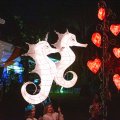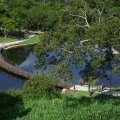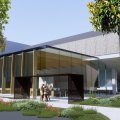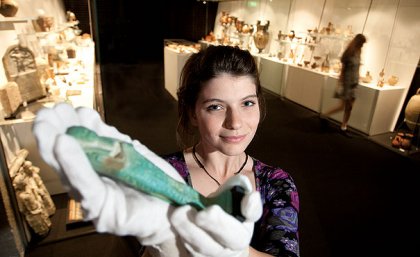
A delicate removal operation has seen hundreds of ancient treasures held by The University of Queensland shifted to a new home on the St Lucia campus.
Seven hundred and fifty items were carefully transported from the R.D Milns Antiquities Museum in February to the ground floor of the UQ Art Museum while the iconic Michie Building undergoes extensive renovations.
The move coincides with the launch of a new online database which will catalogue UQ’s impressive collection of antiquities for students and scholars around the world.
Museum Director Dr Sonia Puttock said the collection comprised 5000 items including “sherds” (fragments), making it the second largest of its kind in Australia. The museum’s focus is on Greek and Roman artefacts, with a particularly impressive assortment of ancient coins.
Thousands of people visit the museum each year for tours and hands on workshops, with scholars from around the world also relying on the items for their research.
“All museums and collections should have an educational component in their mission statements and knowledge about the artefacts must be available to all interested parties,” Dr Puttock said.
“I receive emails from international scholars about artefacts they know are in our collection, including an inquiry from a researcher in Bologna for information about a small fragment of ancient Greek pottery (c. 530BC). She was writing an article about the demi-god Heracles/Hercules and the fragment was an important part of that work.”
Almost 100 of the artefacts are now described on the new website, which includes detailed information about each item’s measurements, source material, date, origin and design. These items include vases, amphorae and other vessels, figurines and sculptures.
Dr Puttock said the team planned to progressively add to the database in addition to raising funds to produce the museum’s first comprehensive print catalogue.
The museum is named in honour of Emeritus Professor Bob Milns, who was Professor of Classics and Ancient History for more than three decades and built up the collection considerably during his tenure.
Emeritus Professor Milns continues to work with The Friends of Antiquity, a dedicated alumni group who organise regular events and fundraise to boost the collection and provide guest lectures and postgraduate scholarships.
The museum’s most valuable item in monetary terms is a Roman marble copy of a Greek statue of Aphrodite which is said to have been owned at one time by Clive of India. Another popular item is a striking 2400-year-old Egyptian mummy mask, which was named UQ’s “favourite treasure” during last year’s Centenary celebrations.
“Of course all the artefacts are as valuable as each other; even small fragments are able to give information about the ancient world and the people who lived in it,” Dr Puttock said.
The Michie Building renovations are expected to be completed in early 2012 and will transform the 10-storey building into a teaching and learning hub incorporating entirely new spaces for both the Antiquities Museum and the UQ Anthropology Museum.
Dr Puttock said she was excited about the next phase in the museum’s history.
“The new museum will be on level two of the Michie Building on the main thoroughfare. This means it will be far more visible and accessible to anyone passing through the building and should increase our public profile,” she said.
Members of the public are welcome to visit the museum’s temporary home between 10am to 4pm seven days a week (no bookings required), with school and interest groups able to organise guided tours in advance.
Media: Dr Puttock (s.puttock@uq.edu.au) or James Donaldson (07 3365 3010, antiquitiesmuseum@uq.edu.au) or Cameron Pegg at UQ Communications (07 3365 2049, c.pegg@uq.edu.au)
.jpg)
